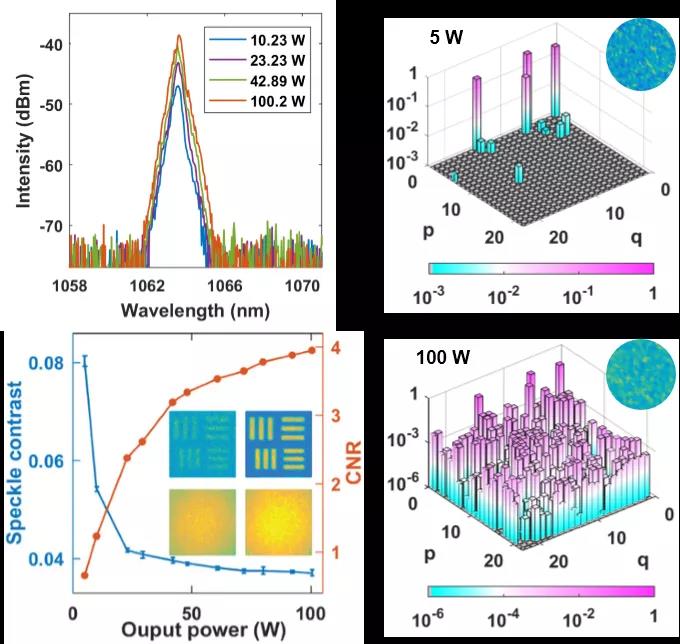
With the widespread application of imaging in various fields, more and more application scenarios have put forward higher demands on the characteristics of imaging light sources. Ordinary imaging light sources, such as white light sources, have gradually been replaced by light sources with higher brightness, such as super-luminescent diodes SLDs, semiconductor lasers, and so on. However, due to the high spatial coherence of conventional lasers, when it is used in a scattering environment or imaging rough objects, a large number of coherent photons will interfere and generate speckle noise, which seriously affects the imaging quality. Therefore, how to achieve speckle-free imaging is a hot research topic in the imaging field, and the key is to realize a light source with high brightness/high spectral density and low spatial coherence. However, for conventional light sources, these two characteristics are not compatible. For example, white light sources have low spatial coherence but low brightness, while conventional lasers are the opposite. Therefore, a high-power laser light source with low spatial coherence is of great significance for speckle-free imaging.

In order to solve the speckle noise problem of conventional laser imaging, researchers have proposed a variety of solutions, such as using rotating ground glass to disturb the laser wavefront distribution, using nano-disordered media to form a random laser with low spatial coherence, etc., but high power cannot be obtained. Output. The team of Professor Rao Yunjiang of the Key Laboratory of Optical Fiber Sensing and Communications of the Ministry of Education of the University of Electronic Science and Technology of China has made breakthroughs in high-power random fiber lasers. It is the first internationally to apply high-power random fiber lasers to speckle-free imaging. The combination of mode random laser generation, main power oscillation amplification technology and multi-mode fiber realizes a multi-mode fiber random laser with output power greater than 100 W and speckle contrast lower than the human eye's speckle perception threshold (0.04). The new laser has the comprehensive advantages of low noise, high spectral density and high efficiency. Furthermore, based on the light source, the experimental verification of speckle-free imaging has been completed. Experimental results show that the increase of fiber random laser power can excite more effective spatial modes, effectively reduce the speckle contrast of the output light field, and improve the quality of speckle-free imaging. Through the simulation of mode decomposition theory, the close relationship between light source power, multimode fiber mode and spatial coherence is revealed. This research provides a new generation of high-power and low-coherence light sources for high-quality speckle-free imaging, which is suitable for full-field, high-loss or large-penetration non-speckle imaging application scenarios.
Copyright @ 2020 Shenzhen Box Optronics Technology Co., Ltd. - China Fiber Optic Modules, Fiber Coupled Lasers Manufacturers, Laser Components Suppliers All Rights Reserved.